SUMMER DAYS IN THE FOREST - part one
There is a lot to see in the forests these days ... so I try to overcome the desire to spend all my free time at beach ... and go on little macro expeditions in the woods, about 10 - 20 kilometers from my seaside area.
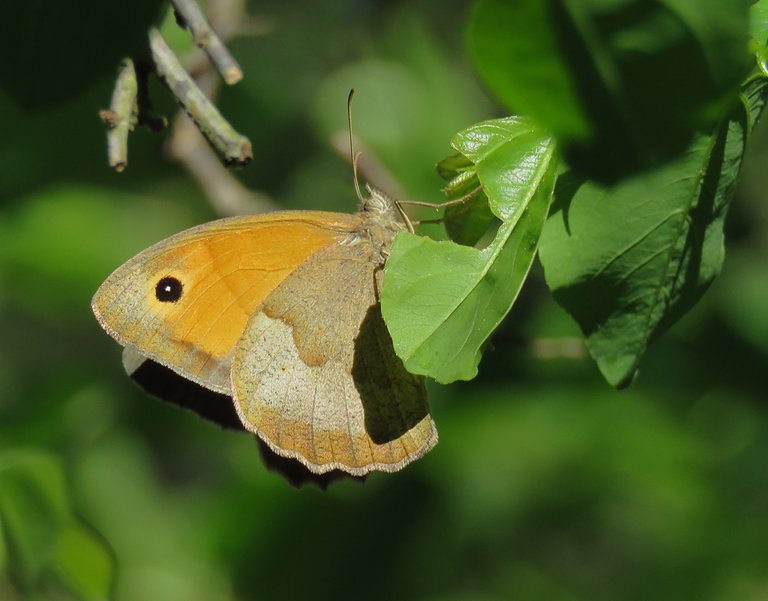
In this series of posts, I'll be showing the interesting things I found there, on and under various trees. Here you can see the Maniola jurtina butterfly, hanging on the lower branches. These butterflies are very common and numerous here, as they are on the coastal meadows ...
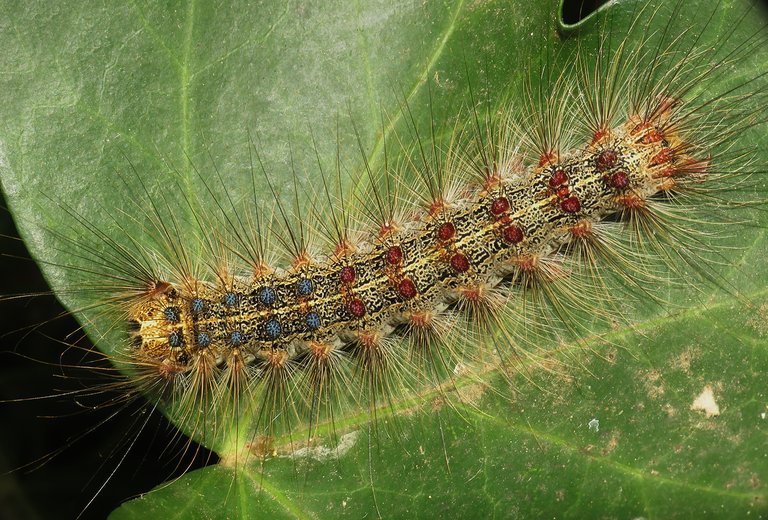
... unlike these caterpillars. I encounter them only in the shady places under the trees.
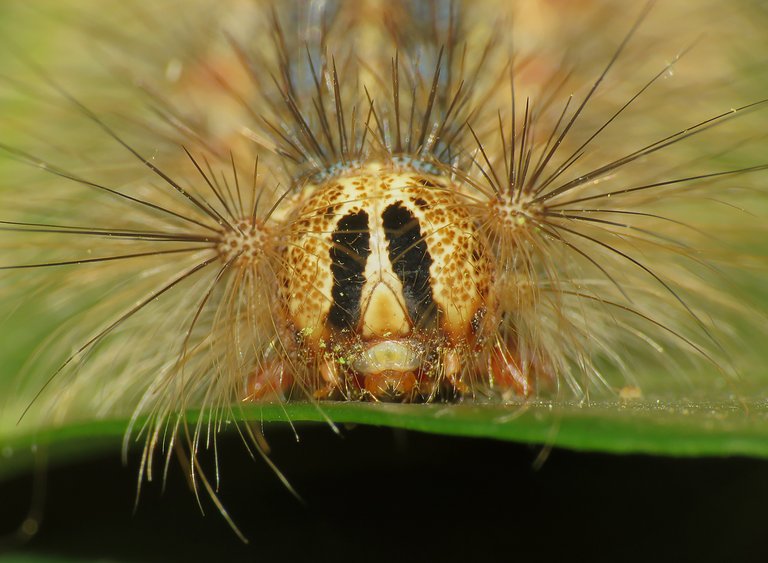
These are caterpillars of the Lymantria dispar moth ... which I didn't have the opportunity to photograph for this post.
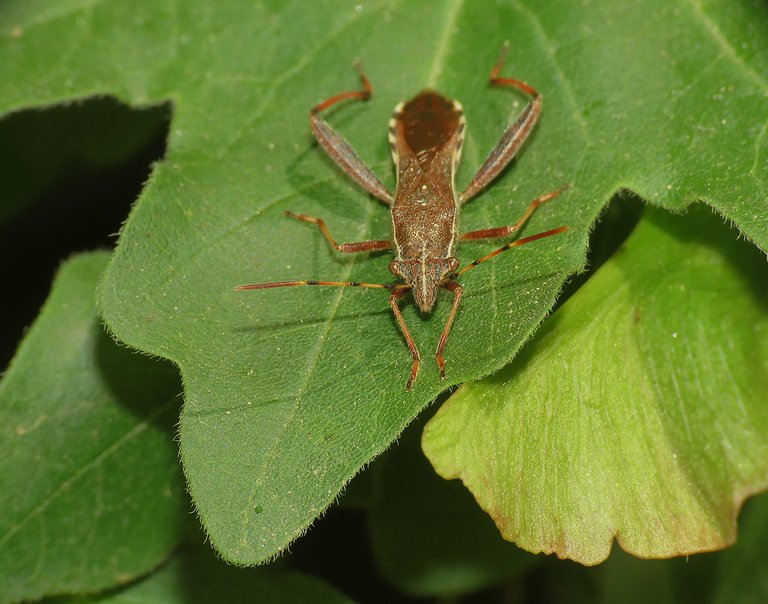
This, resting on the large leaf on the lower branches of the tree, is the Camptopus lateralis bug.
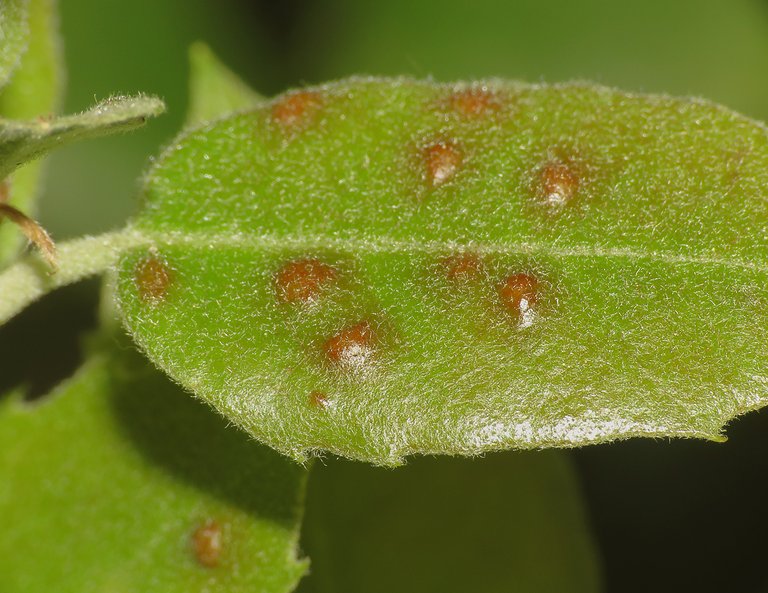
Many leaves, like this young one of the Evergrine oak (Quercus ilex) have some kind of protuberances made by various insects.
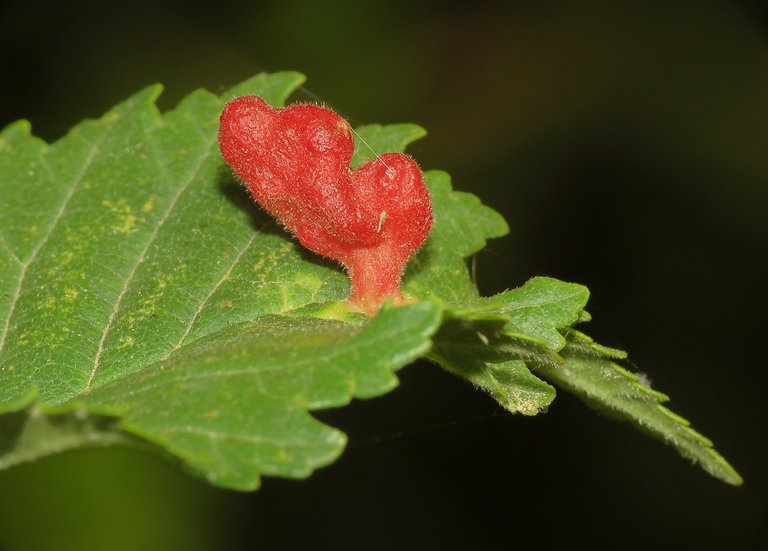
Some of these formations are quite beautiful. I found this one on the elm tree.
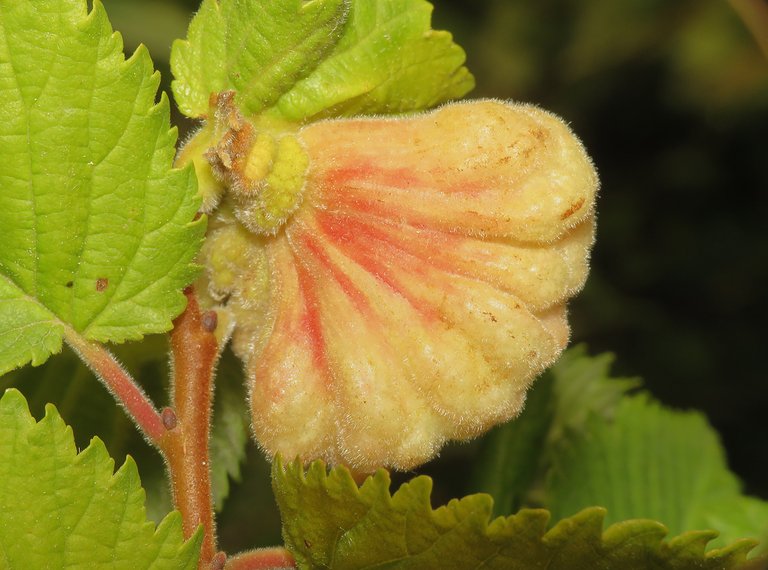
They can vary a lot in size, color and shape ... only the texture, and the tissue is always the same. When I broke one of these soft ones, I found some aphids inside.
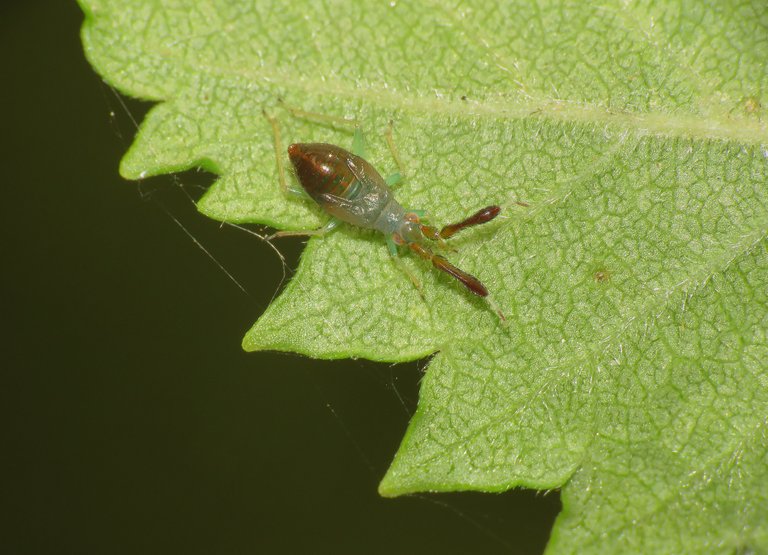 (Enlargeable)
(Enlargeable)
Also here,on the same small elm tree, I found this. I never saw a bug nymph like this before. Its antennae are perfectly mimicking another pair of legs, both in shape and movements. And to make things even more weird, while the antennae are very pronounced on the green background of the lower surface of the leaf, the legs are practically invisible until you take a good look through the macro lens. So from a distance the nymph looks like some undefinable creature with a body and just two legs ... or antennae ... or something. When you take a better magnified look, you can see its real anatomy, but then gets strange again, only in a different way. It was very exiting to observe this species for the first time.
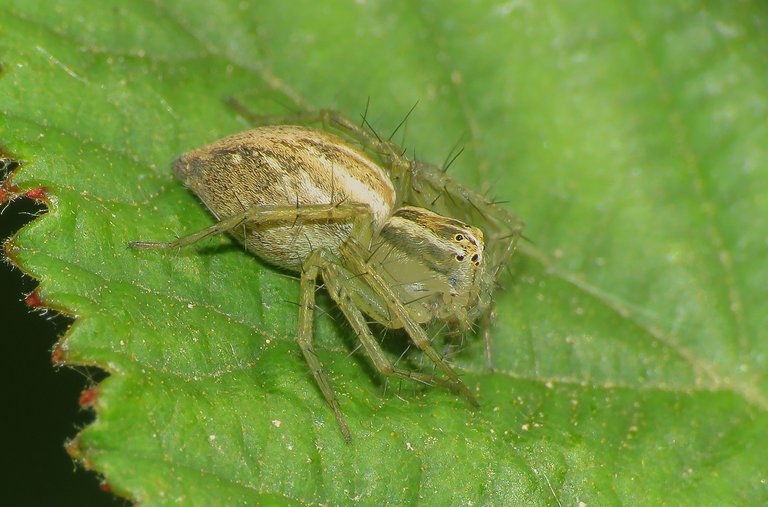
Blackberry shrubs are growing under some trees, usually in the less shady places. This spider is resting on one of the shrubs ...
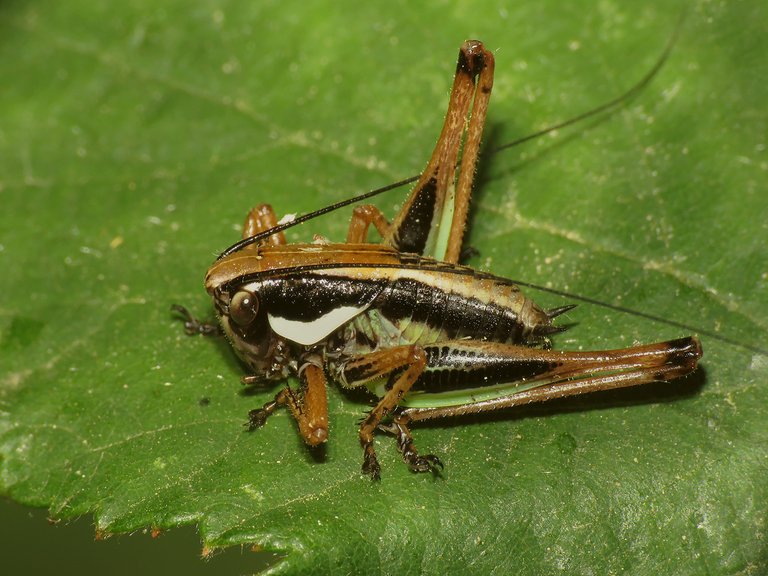
... just like this young Marbled Bush - cricket ... in the characteristic resting pose.
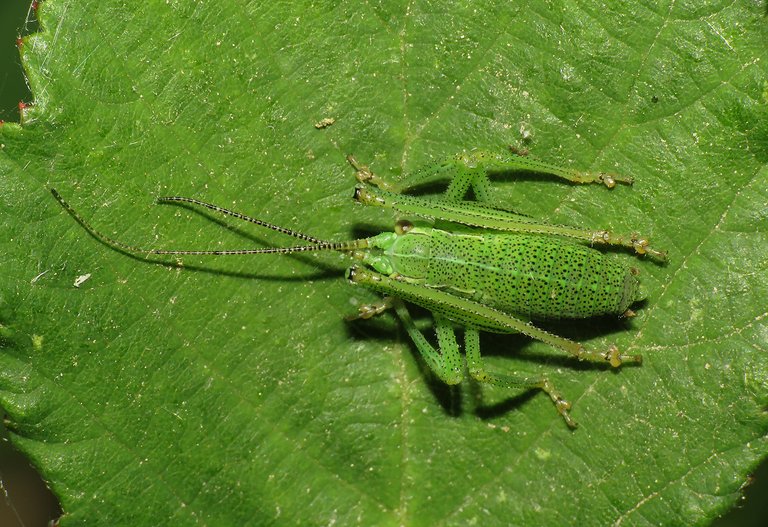
This Speckled Bush-cricket nymph uses a different posture for resting and camouflage.
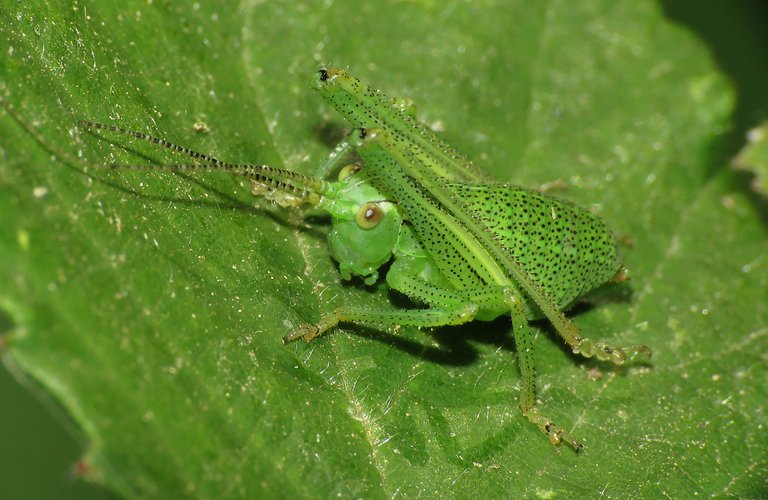
Here is a lateral view of the same scene.
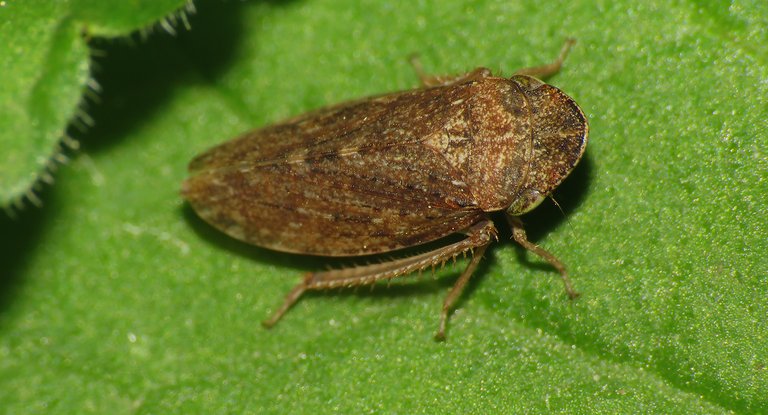
Many froghopers are crawling and jumping around these shrubs. I don't know the name of this species.
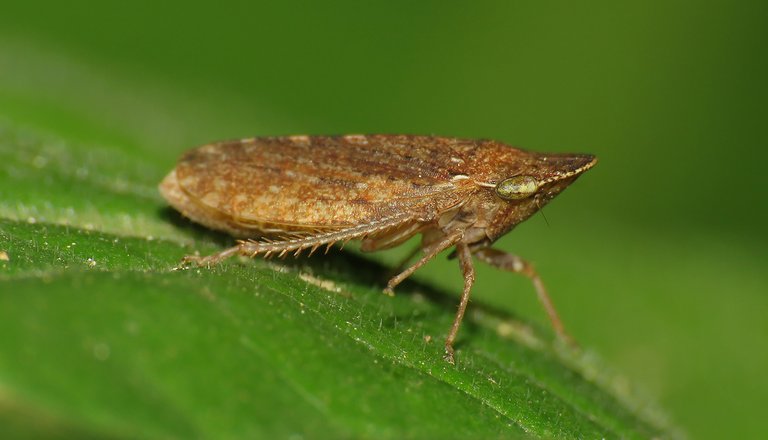
They also look interestingly different when viewed from a different angle.
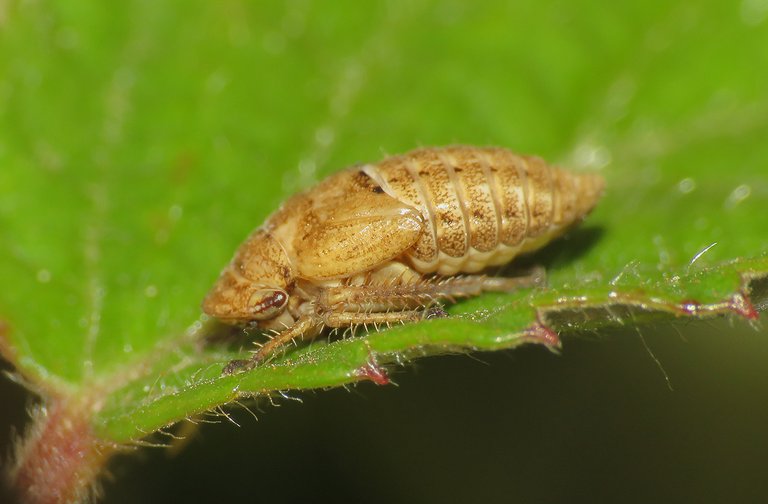
Here is a nymph, waiting for the metamorphosis.

Here you can see some pale Leafhopper species.
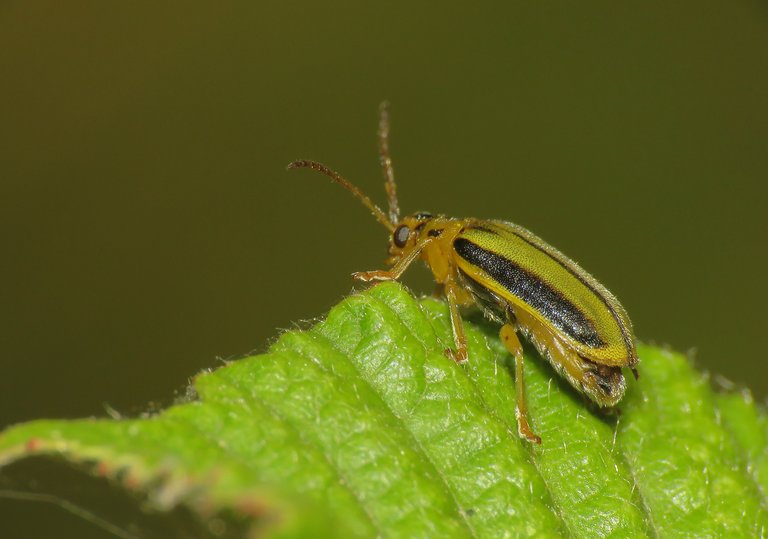
Here you can see the Elm leaf beetle (Xanthogaleruca luteola ) passing by.

Here, on the blackberry buds, is a small bug ... and I wasn't able to find anything about this tiny, obscure species.

Many trees are covered with ivy. A small moth on this photograph is resting on ivy.
Looks very visible on the vividly green surface ... but it looks like some of the many dried out plant parts that are falling from the trees ... so is still camouflaged, only in a less obvious way.
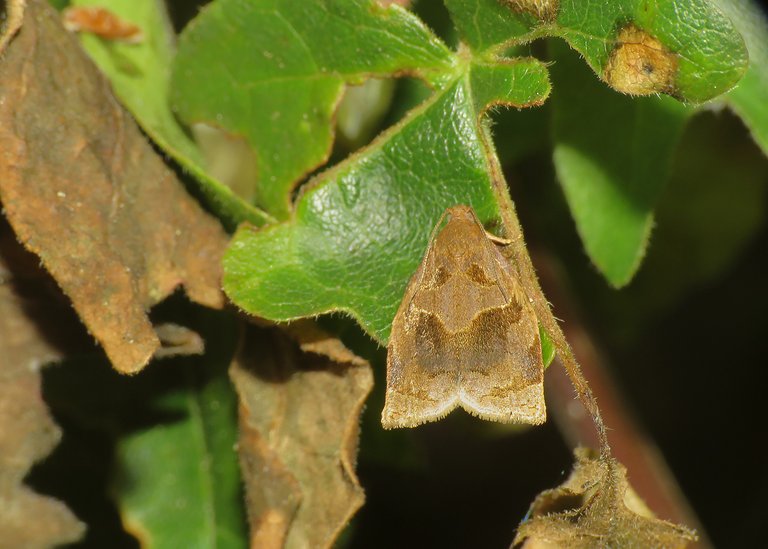
On this shot is the same species ... also on the ivy ... but here the leaves are partially rotting ... so in this brownish ambiance, the moth gets less visible ... the same garment is used for a different kind of camouflage.
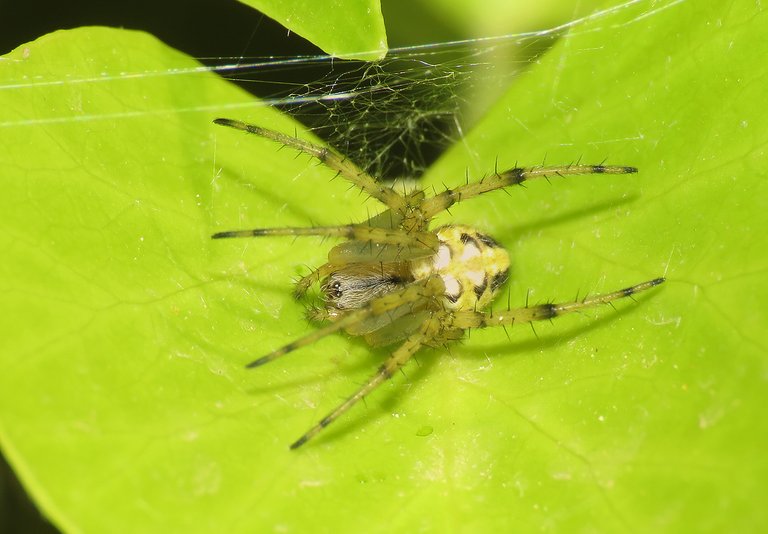
Also on ivy, on the fresh young leaf ... this Neoscona adianta spider has made his home ... temporarily at least.
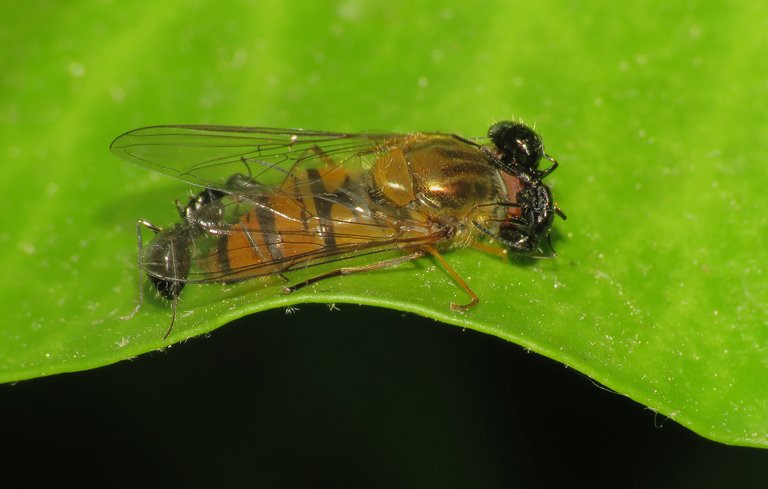 (Enlargeable)
(Enlargeable)
On another leaf two ants are diligently dismantling a corpse of some dead flower fly.
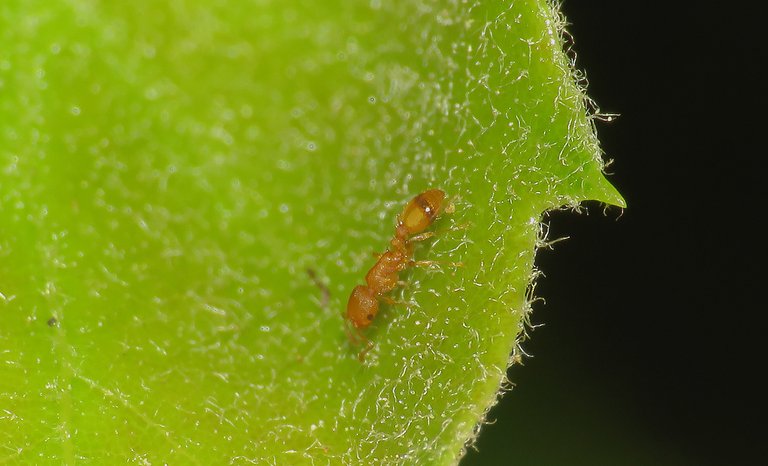
This minuscule yellow ant from the genus Leptothorax ( I think, that's my conclusion after the extensive internet search where I found many extremely similar species from that genus) is crawling across a leaf of some undefined tree.
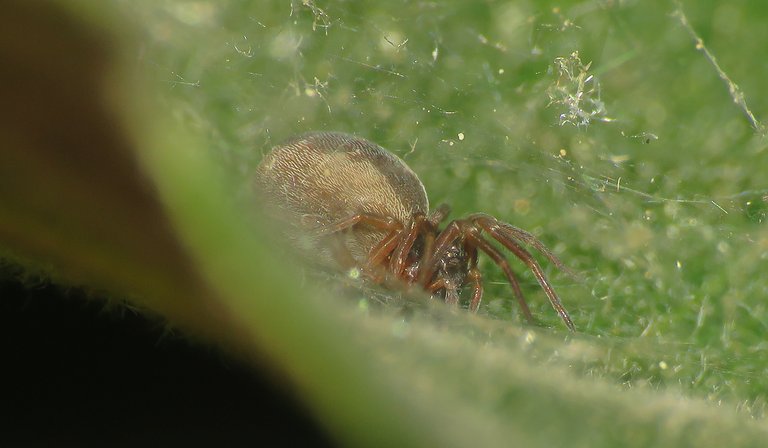
A minuscule spider ... just a bit bigger than the ant you just saw ...
 (Enlargeable)
(Enlargeable)
... has built a shelter on the upper surface of some different leaf ... while the small spider on the following photograph ...
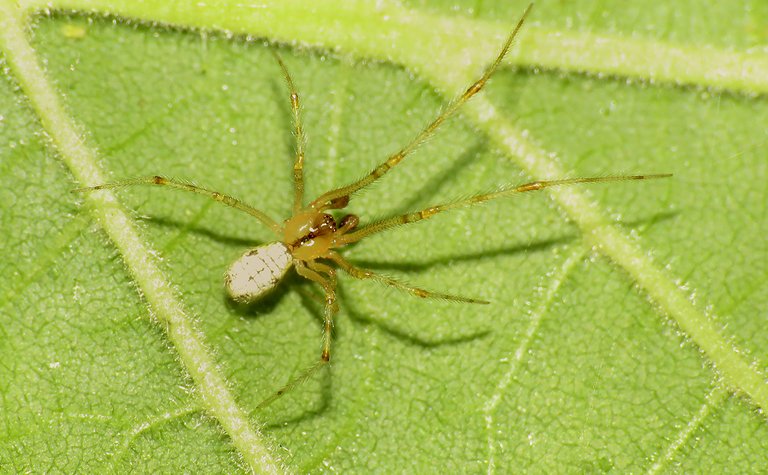
... prefers to hang around the lower surface ... this shot, wasn't taken on the same leaf, as the text without this explanation, could falsely suggest.
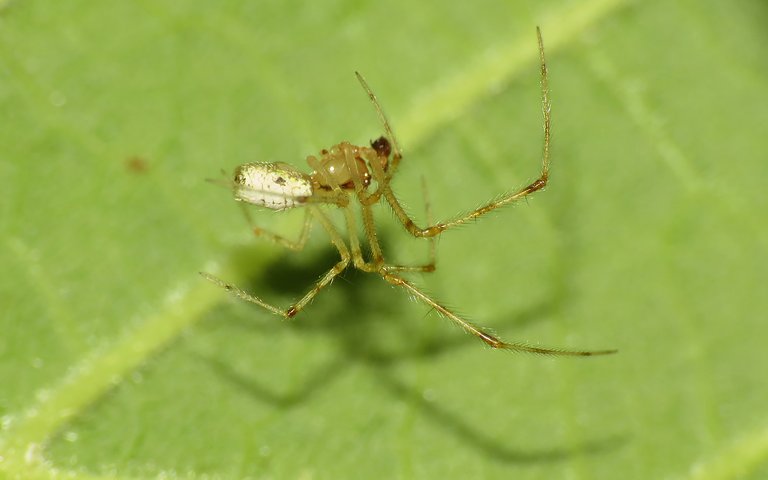
I can't tell you the names of these spider species :D not because is a secret ... I just couldn't find out the names ... or anything else, about these small spiders.
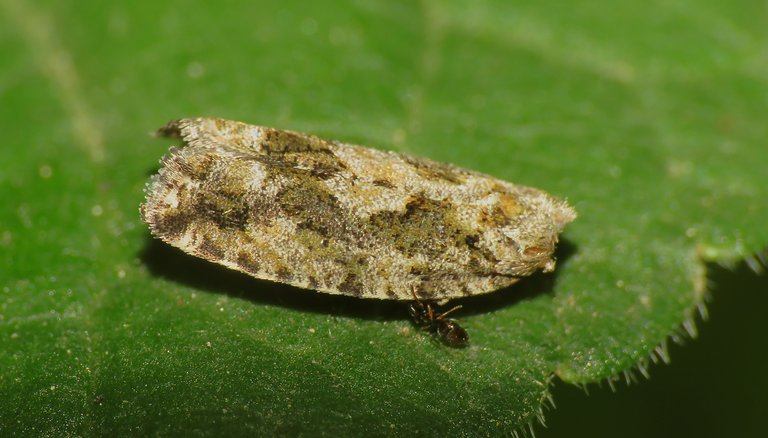
When I first saw this little piece of something ... I thought it was some small dried out plant part ... fragment of the bark, small dead leaf or part of some seed ... when I took a better look, it was clear that is a very small moth ... and when I slowly came very close, fearing that the moth could fly away, and took a look through the macro lens, I saw that this is just a partial corpse of the moth, the head was missing and some minuscule ant were working on the remains underneath the wings.
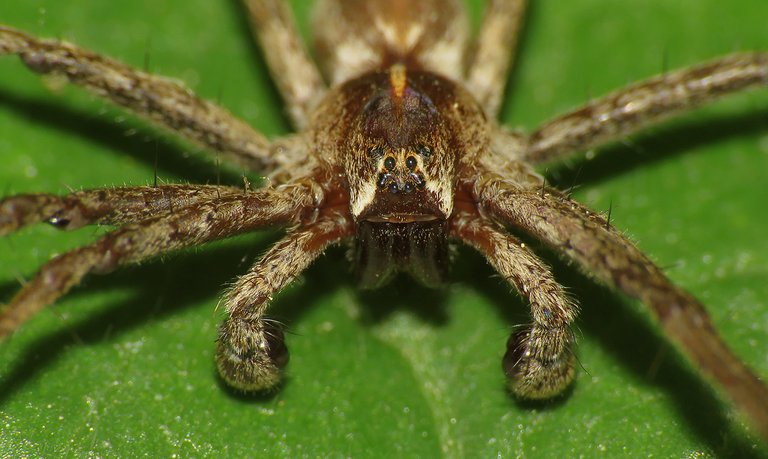
This pretty large Pisaura mirabilis is quiet on a large leaf of some herbaceous plant on the forest floor.
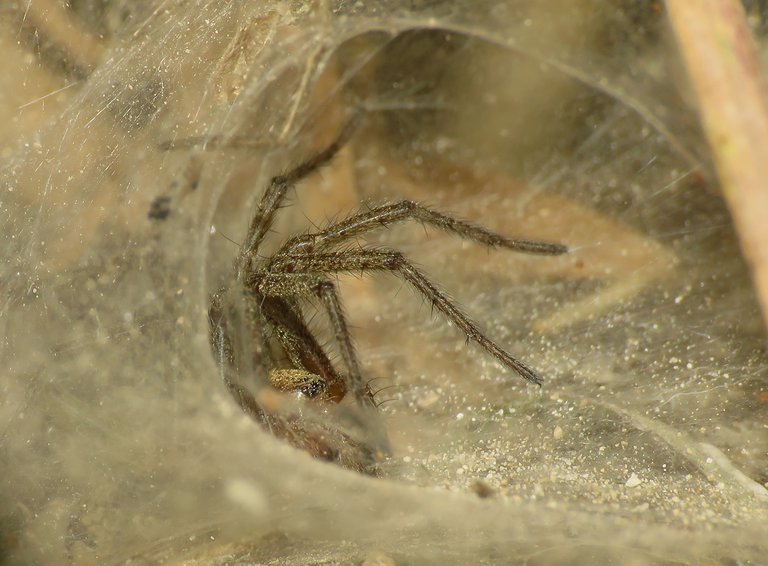
The Agelena labyrinthica spider is peeking from its large and complex den.
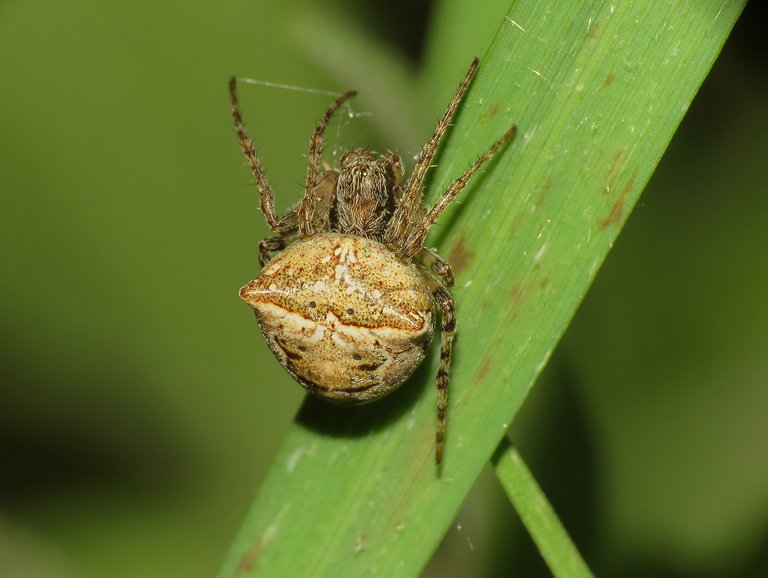
This pumpkin spider (Don't know the exact species) is resting in the grass under his orb.
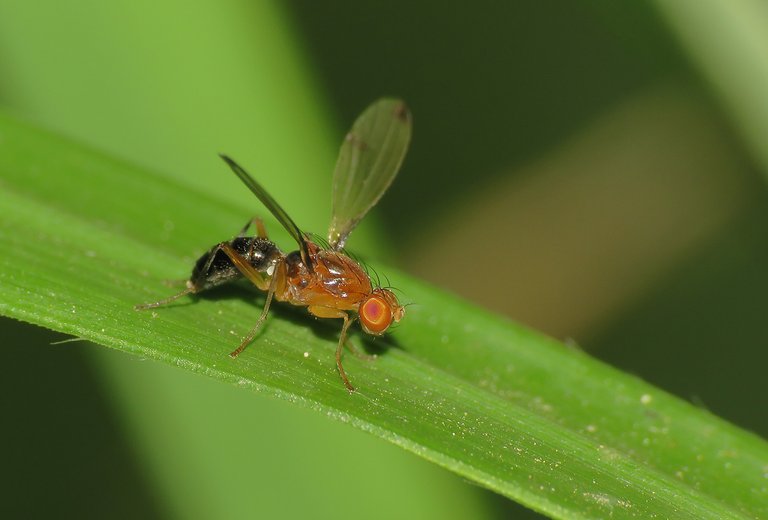
Not far from there, also in the grass under the large oak tree ... this small fly, like many others from the same, Sepsidae family is walking up and down along the blade of grass, while moving her wings as a way of communication.

This Polydrusus formosus weevil is hiding among the buds and young leaves of the elm tree, I took this shot on the lower branches.
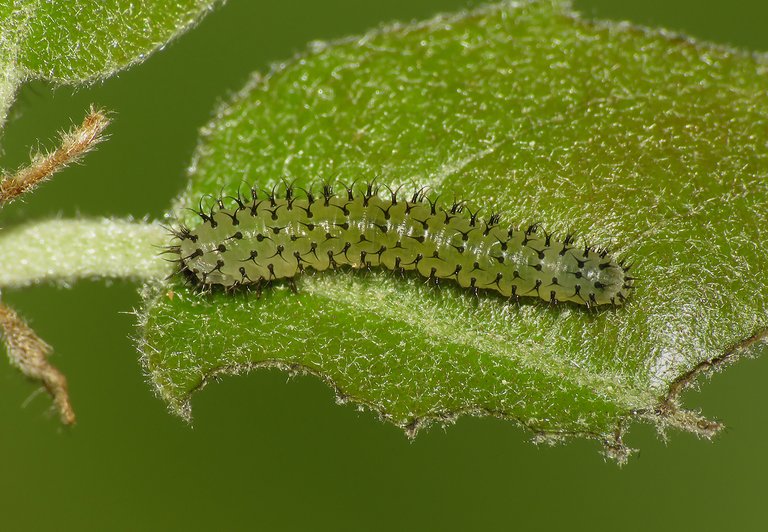
Here, photographed on the leaf of a different tree is the larva of the leaf wasp (Periclista albida).
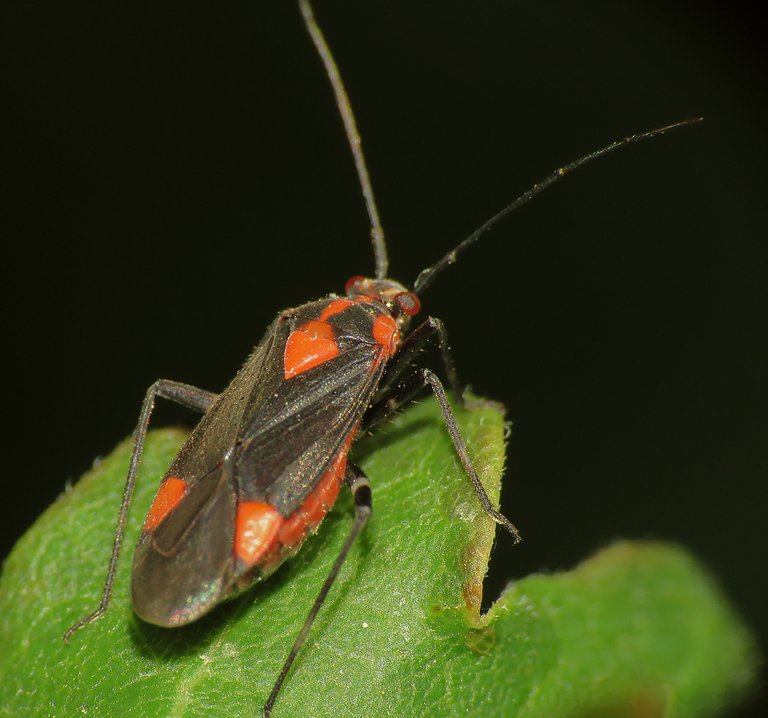
And now :) to end the post in style ...
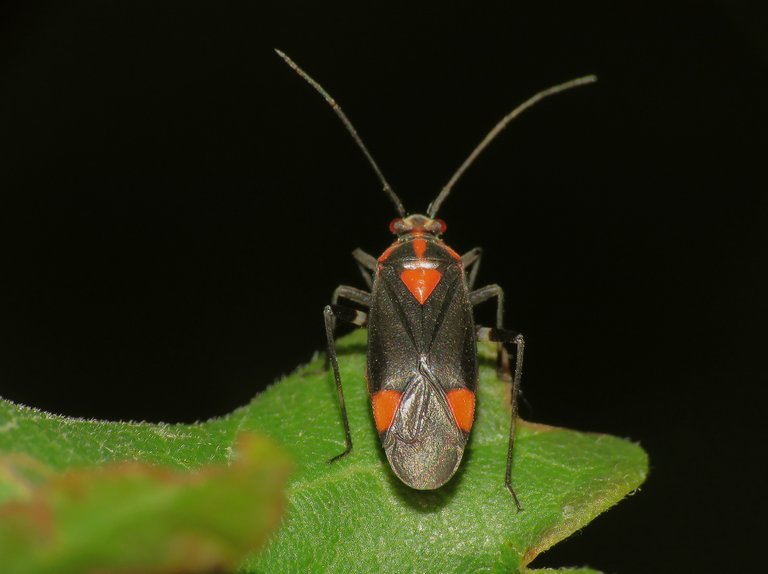 (Enlargeable)
(Enlargeable)
... I present you this elegant bug from the Miridae family, wearing a classic, well-designed red & black combination ... and a vivid, red heart on its back.
I never saw this species before. It looks a lot like the common Lygus pratensis, but is considerably bigger and has an interesting twist on the basic Lygus design ... the heart shaped detail looks always great and surreal on this type of bugs ... and when is red :) is crazy ... a Valentine bug ! Or a bug from the castle of the Queen of Hearts.
As always in these posts on HIVE, all the photographs are my work.
Very beautiful butterflies and beautiful photos! Thanks for the post!
Thanks for the comment :)
;)
Complete publications with a variety of information. A real treat! Thanks for sharing.
Very nice and sharp photos of the tiny insect universe! I would never be able to see them on green leaves in day light!!
They are very important supporters to our bigger ecological universe!
السلام عليكم
صور جميلة جد جد لقد نشرتها لك عبر المواقع الاجتماعية
لي يتمتع بها المحترفون وشكرا
شكرا لك. وأنا أقدر ذلك.
السلام عليكم
صور جميلة جد جد لقد نشرتها لك عبر المواقع الاجتماعية
لي يتمتع بها المحترفون وشكرا
I love the photographs, and I love the way you describe each photo, it just takes me to that place with every word. One of the best posts I have seen here!
Thank you very much :) Glad you like these photo reports from the woods in my area.